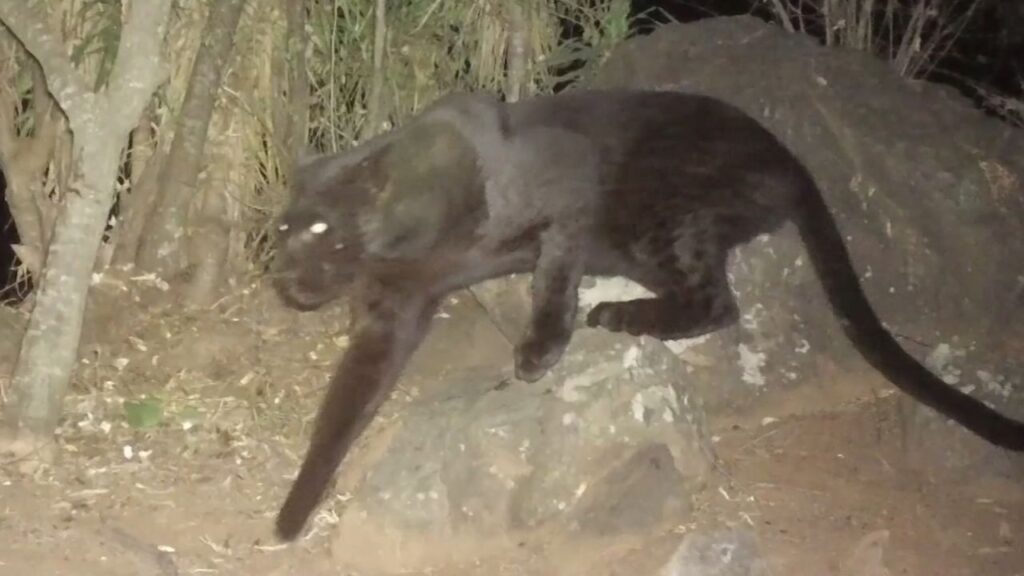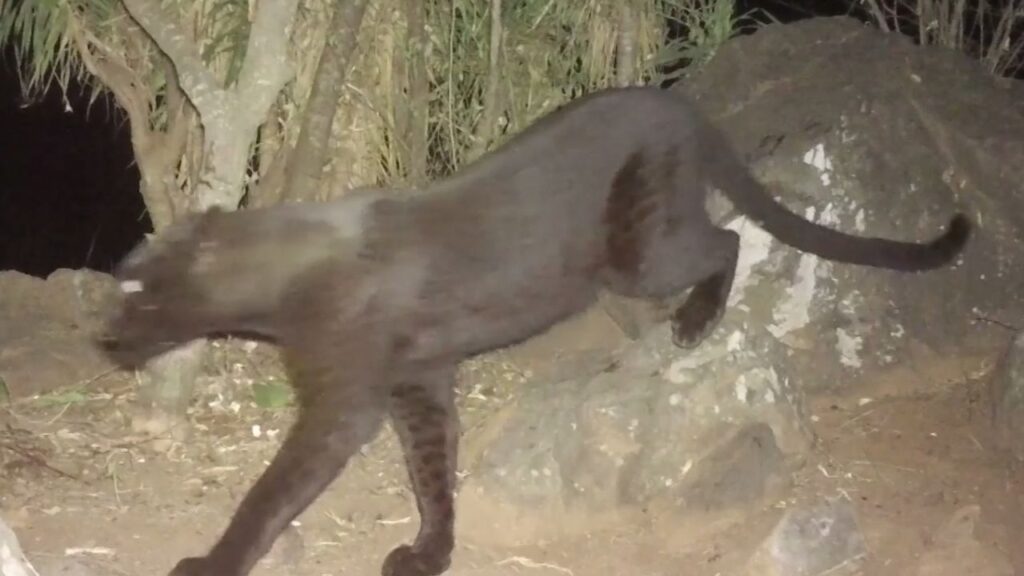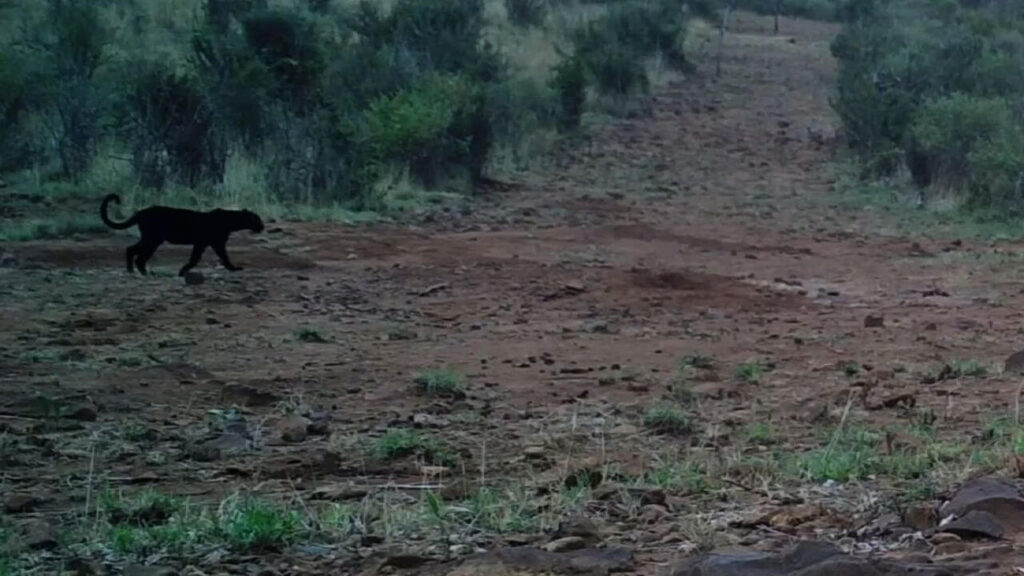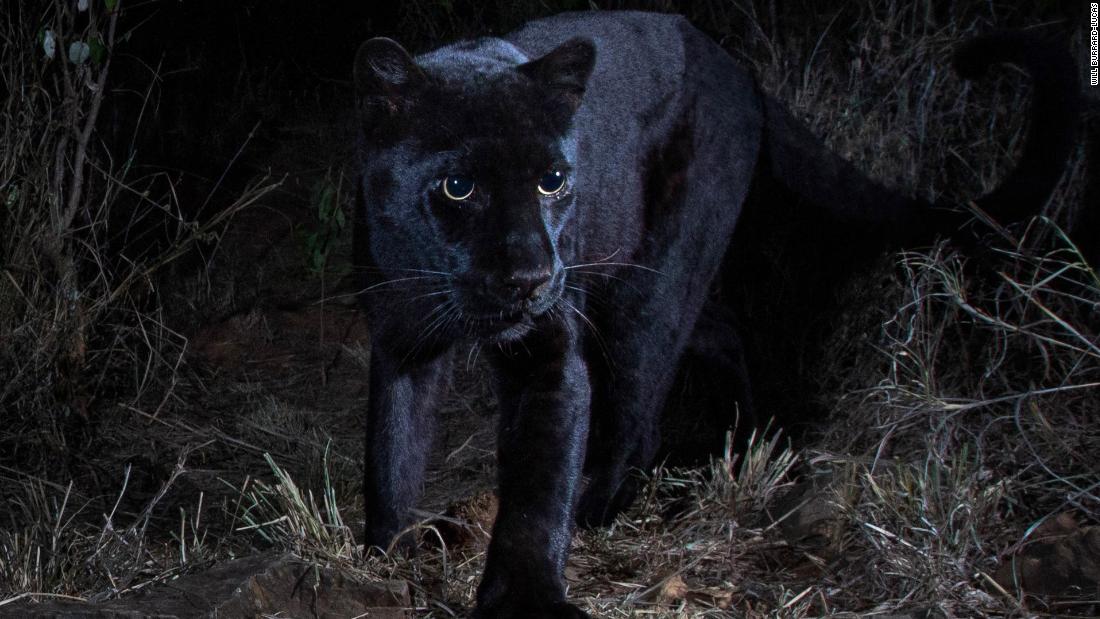Extremely rare black leopard captured on camera in Kenya. The elusive African black leopard is alive and well there, as evidenced by new photographs.
Black Leopard Captured On Camera In Kenya Years Ago
According to Nick Pilfold, a global conservation scientist at the San Diego Zoo, a team of biologists shot rare footage of the sleek big cat after months of watching and waiting.

While there have been previous reports of sightings of black leopards (also known as black panthers) in Africa, the new images provide important confirmation. “It’s likely that black leopards have always lived in Kenya; it’s just that high-quality imagery to confirm it has been missing until now,” Pilfold said.
The sighting of the black leopard was reported in the African Journal of Ecology.
The Daily Nation newspaper in Kenya reported that its photographer, Phoebe Okall, captured an image of a black leopard in the same area in 2013. It’s unclear whether or not that image was made public at the time.
Pilford stated that he is “aware of a few different photos taken over the years,” but that “the majority of them are taken from a distance and could not be used as confirmatory evidence.” He described the 2013 image in particular as “a captive black leopard brought from America as a kitten to Kenya, not wild.”
“Prior to our published paper’s observations, the last confirmed observation (in the published record) was 1909 in Ethiopia,” he explained.
How They Obtained The Footage
Pilfold’s team shot a slew of photos and video footage of the agile animal moving in the dark, its eyes glittering in the night like two shiny marbles.
Pilfold explained that his team of biologists had set up remote cameras to monitor the leopard population near a conservancy area in Laikipia County last year after hearing reports of a possible black panther sighting. “We increased our camera placement in the area where the reports were made,” he said Tuesday evening. “Within a few months, we were rewarded with multiple camera observations.”
Despite reports of sightings, black leopards are still considered rare on the continent, according to Pilfold.
According to Pilfold, the leopard’s coat is pitch black due to melanism, a gene mutation that causes an overproduction of pigment. It’s the polar opposite of albinism, and while the leopard’s coat appears black during the day, its rosette patterns can be seen in infrared imagery at night.
“Melanism affects about 11% of leopards worldwide, but the majority of these leopards live in South East Asia,” Pilfold explained.
Read more Amazing Photo: Does A Cheetah Really Have Three Heads?
Photographing The Black Leopard Has Long Been A Dream
Will Burrard-Lucas, the photographer who captured the images of the black panther, described his long-held desire to photograph the big cat.

“No animal is shrouded in more mystery, no animal is more elusive, and no animal is more beautiful to me,” he wrote on his blog. “They remained the stuff of dreams and far-fetched stories told around the campfire at night for many years.” Nobody I knew had ever seen one in the wild, and I never expected to.”
Burrard-Lucas said he took the photos at Laikipia Wilderness Camp with a Camtraptions Camera, which specializes in wildlife photography and video. The cameras were strategically placed near animal trails as well as water sources such as pools and natural springs. According to the African Journal of Ecology, they were left on 24 hours a day in most places but only turned on at night in public places.
Leopards are listed as critically endangered on the Red List of Threatened Species maintained by the International Union for Conservation of Nature.
According to the San Diego Zoo, the total extent of the animal’s population decline is still unknown. However, several factors, including hunting, habitat loss, prey competition, and conflict with livestock and farmers, have significantly reduced their numbers.

Pilfold is part of a San Diego Zoo team that is working with local partners, including the Kenya Wildlife Service, to monitor leopard populations and help save the species.
He marveled at the coincidence of the location of an animal also known as the black panther, the title of one of last year’s most popular films.
“Our observations happen to be very close to where the fantasy Marvel comic country of Wakanda is suggested to be located,” he said.
Black panthers are any melanistic leopards, jaguars, or other big cats.
It Began In The Local Community

Ambrose Letolulai, a local leopard conservationist involved in the project, was speaking with the community to better understand the human-wildlife conflict. In one interview in September, he spoke with an elder who told him about the problems they were having with common leopards killing livestock in the area. The elder told him he had seen a black leopard, which he described as “calf killers” in the Samburu language. The team then installed a camera trap in that area.
“I first heard about the black leopard as a child from elders’ stories, but I didn’t believe it until I saw it for myself,” he told CNN. “As a native, I’ve always heard about the black leopard.”
According to Paula Kahumbu, a Kenyan conservationist, there have been numerous unconfirmed sightings of black leopards, but this is the first time one has been proven.
“Despite many challenges in the sector,” Kahumbu said, “Kenya’s wildlife continues to awe and inspire the world.” “I hope that this extraordinary discovery convinces authorities that we must balance conservation and development in order to protect our spectacular and mysterious species.”
Letoluai was congratulated by Kahumbu for her role in spearheading the international project. “I’m hoping it will inspire a new generation of Kenyan wildlife scientists,” she said.
Post for you Wonderful Thing: Rare Giraffe Twins Born Healthy In Kenya
